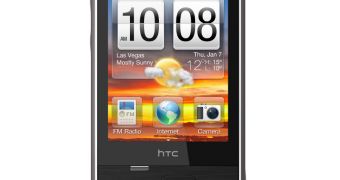Taiwan-based mobile phone maker HTC Corporation announced at the beginning of the ongoing year the launch of a new device that breaks the already established pattern from the company, namely the HTC Smart, which is powered by Qualcomm's Brew Mobile Platform. The platform, as most of you might know by now, has become popular around the world as the development platform for non-smartphone handsets, and Smart is the first device from HTC to come with the OS on board.
[admark=1]We are already accustomed with learning that HTC has launched a new Android or Windows Mobile-based device to the market, and HTC Smart represents a shift from this road, though it still comes with plenty of features to be enjoyed, that's for sure. As an example, we can mention the HTC Sense experience from the handset vendor, which is already familiar with the owners of an Android-based device from HTC, and which has been also included in the company's latest WinMo-powered phones.
As for the HTC Smart, which can be seen in the video embedded at the bottom of this article (courtesy of PDA.pl), it will arrive on shelves as an affordable device from the company, and has been already announced to come exclusively via O2 in some European countries. Although low-cost, the phone does include a series of appealing capabilities and specs, including a 2.8-inch TFT-LCD touch-sensitive screen that boasts a QVGA resolution, or a 3.0-megapixel photo snapper with fixed focus and flashlight.
Other specifications of the new mobile phone also include a 300 MHz processor, coupled with 256 MB of ROM and 256 MB of RAM, Bluetooth 2.0 and mini-USB 2.0 connectivity options, a 3.5 mm stereo audio jack, a microSD memory card slot for additional storage space, and support for Quad-band GSM/GPRS/EDGE (850/900/1800/1900 MHz) and HSDPA/WCDMA (2100 MHz) frequencies. The handset measures 104 x 55 x 12.8 mm (4.09 x 2.17 x 0.50 inches), weighs in at 108 grams (3.81 ounces) and packs inside a 1100 mAh battery that can offer up to 450 minutes of talk time or up to 450 hours of standby time.

 14 DAY TRIAL //
14 DAY TRIAL //